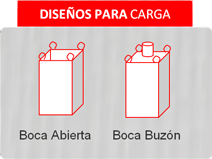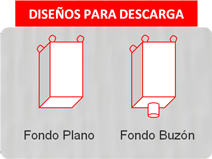General information and actual international quotation
Sugar (sucrose) is a product of sugar beet and sugar cane. The sugar obtained from sugar beet does not differ from the cane sugar obtained from sugar cane in terms of its chemical and physical properties. Commercial white granulated sugar consists of the four types of sugar: glucose, dextrose, fructose and lactose. Like all types of sugar, it is also a carbohydrate.
Sugar is produced primarily in Brazil, India and China. Sugar is also produced in Europe in countries such as France, Germany and Poland. Their significance is far lower than that of the countries named first, however. Around 75 per cent of global quantities of sugar are obtained from sugar cane. Sugar cane requires both periods with lots of rain and periods of heat and dryness in order to grow, for which reason it is cultivated primarily in tropical and subtropical areas. In contrast, sugar beet requires moderate temperatures all year round and evenly distributed quantities of rain, for which reason it is cultivated primarily in Russia and the EU. In Europe, the sugar beet is still a relatively young crop; it has only been used to produce sugar for around 200 years. Because the sugar beet plant is dependent on seasonal cycles, the price for the sugar obtained from it is subject to greater fluctuations than cane sugar.
In Brazil, sugar cane is also used as an energy crop. Around half of Brazil’s sugar cane output is not processed into sugar but is instead used as fuel for cars. Sugar also accounts for more than 60 per cent of global ethanol output. For the southern countries, the promotion of the domestic ethanol industry also means the creation of jobs for the rural, but also for the highly qualified population. For this reason, many sugar-producing countries also have their own ethanol production industry. At the same time, these countries are also not affected by the fluctuating prices for sugar and crude oil.
The most important trading venues for sugar are the New York Board of Trade (CSCE), the London International Financial Futures and Options Exchange, the Chicago Board of Trade, the Bolsa de Mercadorias & Futuros, the Kansai Commodities Exchange and the Tokyo Grain Exchange.
Actual Market Quotation
Technical specification
| ICUMSA | 45 RBU ICUMSA Attenuation index units Method # 10-1978 |
| ASH CONTENT | 0.04% Maximum by Weight |
| MOISTURE | 0.04% Maximum by Weight |
| MAGNETIC PARTICLES | mg/kg 4 |
| SOLUBILITY | 100% DRY & Free Flowing |
| GRANULATION | Fine Standard |
| POLARIZATION | 99.80º Minimum |
| Max AS | 1 P.P.M. |
| Max OS | 2 P.P.M. |
| Max CU | 3 P.P.M. |
| COLOUR | Sparkling White |
| SEDIMENTS | NONE |
| SO | mg/kg 20 |
| REDUCING SUGAR | 0.010% Maximum in Dry Mass |
| RADIATION | Normal w/o presence of cesium or iodine SO2: Certified |
| SUBSTANCE | Solid, Crystal |
| SMELL | Free of any Smell |
| HPN STAPH AUREUS | per 1 gram – NIL |
| MICROBIOLOGICAL LIMITS | Pathogenic Bacteria including Salmonella per 1 gram – NIL Bacillus per 1 gram – NIL |
| PESTICIDE TRACES | Maximum mg/kg Basis DDT 0.005 – PHOTOXIN 0.01 – HEXACHLORAN – GAMMA ISOMER 0.005 |
| CROP | 2013 or more recent crop |
| PHYTOSANITARY CERTIFICATE | of no radiation, no virus, no insect parts, no rodent excrement, no husks and no poisonous matter. Product is suitable for HUMAN CONSUMPTION |
Possible packaging
TECHNICAL DATA SHEET:
MAXISACO / BIGBAG
The maxisaco, is a flexible container, which is used for the packaging of various products such as: Minerals, cements, flour, rice, resins, etc. In doses ranging from 500 to 2,000 kilograms. Adapting the confection according to the needs of each client in terms of volume, loading, unloading, restraint and safety factors.
CHARACTERISTICS:
- 100% Recyclable.
- Reusable and Disposable.
- Capacity 500 to 2,000 kilograms.
- Made to measure according to Requirements of the client.
- Use transport and efficient storage.
- Polypropylene fabric with UV filter.



